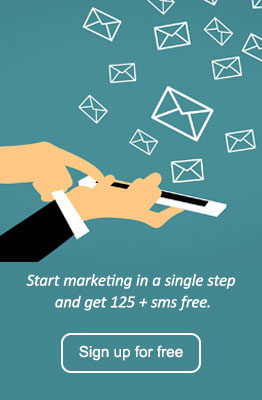
Text, Don’t Call: The New Business Etiquette
We live in a world which is constantly evolving with technology. So much so, that it is safe to say that technology has changed our social etiquette. Most recently, it’s happening with phone calls and how nobody wants them anymore. According to the US office worker’s survey, 40% of baby boomers and 70% of millennials become anxious when the phone rings. It’s not like calls are going extinct, but rather because people now prefer text messaging. Considering the fact that millennials and Gen Z dominate the modern consumer market and will have most of the purchasing power for some time, here are some more interesting statistics businesses should know;
- According to a survey, 75% of millennials when asked to choose between only being able to text versus calls on their phone, chose text messaging.
- According to a survey by Nielsen data, 80% of millennials said that they prefer business text messages over phone calls.
- 90% of American young adults and teenagers use text messaging regularly with around 560 billion text messages exchanged every month.
- Text marketing accounts for 2.3 trillion messages exchanged in the US annually.
- For businesses, it takes hardly a few minutes to set up a mass texting program for marketing or peer-communication.
- Young adults exchange 130 messages weekly.
- According to a survey by Studyfinds, nearly 70% of the group said that they could see a future in which all purchases are made online, and customer service/support would not require calling anymore.
Why Text Messaging Trumps Phone Calls
Before diving into business text messaging, here are some of the reasons why texting has become the new business etiquette. You should understand the logic behind the preference so you can target the right audience with cost-effective Text marketing campaigns and a great return on investment.
1. Calls go unanswered or ignored
Modern consumers prefer not to answer phone calls from numbers they do not recognize which is why most business calls go unanswered. Moreover, most business calls are made during standard business hours so the recipients miss them while stuck in traffic, in a meeting or engaged in more important activities.
2. Texting is Convenient and Easy to Use
In the modern era, convenience is one of the top-selling propositions of any product or service. This generation has access to more technology than all generations before them. So, they’re conditioned to choose the technology which offers the most convenience like texting. It’s not that business calls are going extinct anytime soon, but because people feel more comfortable talking to their peers and not businesses. When it comes to ease of use, nothing beats texting since it’s the most basic feature of a cell phone and the one which doesn’t require any app download or internet connection.
3. Texts are Easier to Remember
With the rise of technology, people don’t have long attention spans and phone conversations can be difficult to remember. With text messaging, everyone has a readily available transcript of the conversation. For example, people forget addresses, numbers and schedules which can easily be sent with a simple text.
4. Texting is Less Stressful
Texting is less stressful than receiving phone calls. Businesses may require recipients to answer questions instantly or recall information you might not remember. Moreover, customers often forget specific questions they wanted to ask as well. By contrast, text messaging gives both parties more time to think and respond to queries which makes it a more organized experience with less pressure.
How Businesses Can Take Advantage of Texting
Modern consumers are accustomed to receiving business text messages such as appointment reminders, deliveries, transaction receipts, promotions and verification messages like OTPs as well. This means that any business can join a mass texting program. However, they have to abide by text messaging rules and regulations. Plus, Text marketing is being used in almost all major industries. So, if it’s not part of your business communication strategies, you’re definitely missing out.
